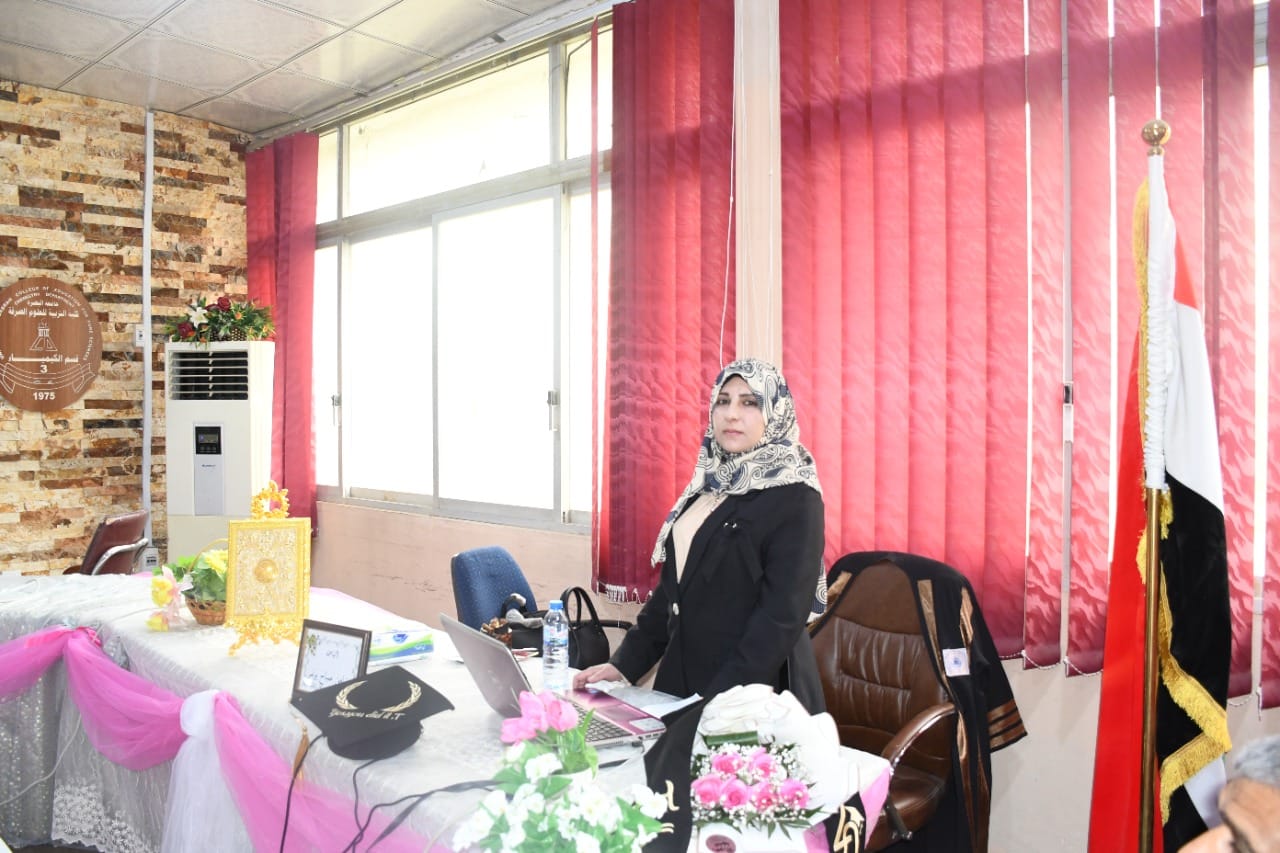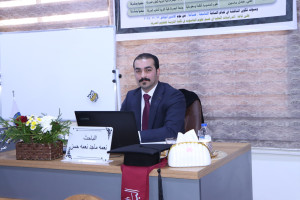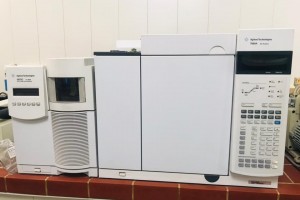
The College of Education for Pure Sciences, Department of Chemistry, University of Basra, discussed a master’s thesis on the preparation, diagnosis and spectroscopic study of the complexes of some new azo dyes and their applications.
The thesis presented by the researcher (Tadamon Sabah Younes) included the importance of azo compounds and their metal complexes in all areas of life and their multiple applications.
The first axis: It included the preparation of two new azo dyes derived from (4-hydroxy cumarine) with each of the procaine, which is symbolized by the symbol T1, and with the sulfacoandin, which is symbolized by the symbol T2, the structural formula and the scientific name of the two dyes.
The complexes of these ligands were prepared with copper and binary cobalt metals, respectively, as their complexes were prepared in a ratio of 1:2, which is equivalent to the ratio of one metal to two ligands. The ligands were diagnosed by the technique of microlysis of elements (C.H.N). The results of the analysis showed the great agreement between the theoretically calculated and the practically obtained ratios, which gave support to the proposed molecular formulas. It was also diagnosed using the nuclear magnetic resonance technique of the H-NMR1 proton, in which the most important signals expected for the protons of the main constituent groups appeared. for the two dyes and also by using 13C-NMR technology for the two prepared dyes, which supported the structural formula for them, and the use of infrared technology
The purpose of the message
The biological activity of the ligands prepared using Gram-positive and Gram-negative bacteria S.aureus, E.coli has been studied for their importance in the medical field and causing many diseases, and compared to the standard antibacterials are vancomycin and cefoperazone. The cytotoxicity of these ligands was evaluated and showed their non-toxicity on red blood cells compared to standard compounds such as sodium cyanide. The ligands have also been studied as an anti-human drug for breast cancer








